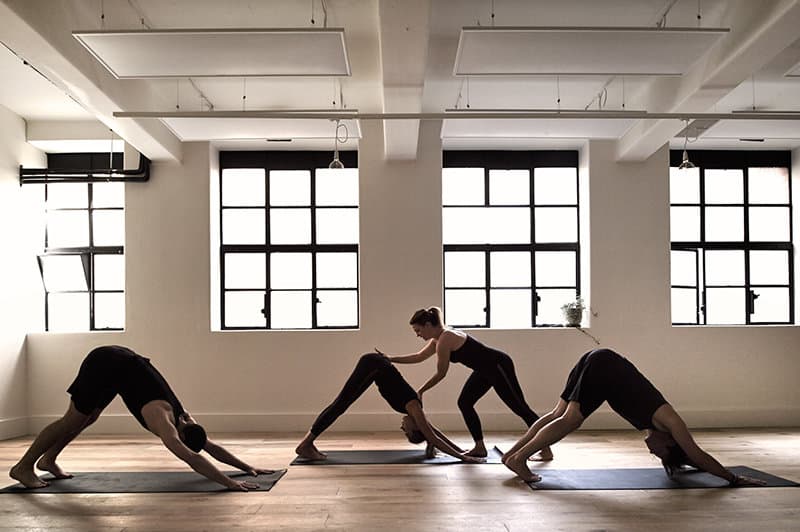Understanding key terms in yoga anatomy is essential for a comprehensive practice. By familiarizing yourself with fundamental concepts like asana, prana, and bandhas, you can deepen your knowledge and enhance your practice.
Knowing these key terms can help you better understand the physical and energetic aspects of yoga, allowing you to approach your practice with greater mindfulness and insight. Whether you’re a seasoned yogi or just starting your journey, grasping these foundational concepts will enrich your overall experience on the mat.
Let’s delve into the basics of yoga anatomy and explore the significance of key terms in enhancing your practice and deepening your connection to the ancient tradition of yoga.
Benefits Of Understanding Yoga Anatomy
The benefits of understanding yoga anatomy are manifold. By gaining insight into the inner workings of the body, practitioners can achieve improved alignment, prevent injuries, and develop enhanced body awareness, ultimately taking their practice to new heights. Let’s delve into these benefits in more detail:
Improved Alignment
Understanding yoga anatomy allows practitioners to grasp how different poses affect the body. This knowledge empowers individuals to make micro-adjustments, leading to improved alignment and a deeper connection to each posture.
Injury Prevention
By comprehending the mechanics of the body, yogis can practice with greater mindfulness and protect themselves from injuries. This understanding aids in identifying potential areas of strain, leading to injury prevention and a safer practice overall.
Enhanced Body Awareness
With a foundational understanding of yoga anatomy, practitioners develop a heightened sense of their bodies. This heightened awareness leads to enhanced body awareness, allowing for a more intuitive and fulfilling practice.

Credit: www.rupahealth.com
Essential Anatomy For Yoga Practitioners
As a yoga practitioner, understanding the essential aspects of anatomy is crucial for enhancing your practice, preventing injuries, and fostering a deeper connection with your body. In this article, we’ll dive into the key terms related to the skeletal system, muscular system, respiratory system, and nervous system, providing a comprehensive understanding of the essential anatomy for yoga practitioners.
Skeletal System
The skeletal system forms the underlying structure for yoga poses, providing support, stability, and range of motion. It consists of bones, joints, and cartilage, which allow for movement and flexibility during yoga practice. Understanding the skeletal system helps yogis execute poses with proper alignment and prevents injuries related to bone and joint stress.
Muscular System
The muscular system is responsible for producing movement and maintaining posture during yoga. It consists of three types of muscles: skeletal, smooth, and cardiac muscles. Engaging and stretching the muscles through yoga poses promotes strength, flexibility, and overall physical well-being. Understanding muscle groups and their functions can help yoga practitioners perform asanas with correct alignment and optimize balance and stability.
Respiratory System
The respiratory system plays a vital role in yoga practice, as conscious breathing enhances the mind-body connection. It includes the lungs, diaphragm, and airways, facilitating the exchange of oxygen and carbon dioxide. Proper breathing techniques are essential for yoga, promoting relaxation, focus, and energy flow. Understanding the respiratory system aids in developing breath awareness and optimizing pranayama practices.
Nervous System
The nervous system is the communication network of the body, regulating sensory perception, motor functions, and cognitive processes. In yoga, the nervous system is deeply influenced by asanas, meditation, and relaxation techniques. Understanding the nervous system can help yoga practitioners manage stress, improve mental clarity, and enhance overall well-being through mindful movement and breath-centered practices.

Credit: www.yogabasics.com
Frequently Asked Questions Of Yoga Anatomy Basics: Understanding Key Terms
How To Study Anatomy For Yoga?
To study anatomy for yoga, start by exploring the major muscles and bones used during yoga poses. Use visual aids like books and charts for a better understanding. Focus on key areas like the spine, joints, and muscles. Practicing yoga postures will also deepen your anatomical knowledge.
Happy studying!
What Are The Body Parts According To Yoga?
The body parts in yoga include the head, neck, shoulders, arms, hands, chest, abdomen, hips, legs, and feet.
What Is Anatomy In Yoga?
Anatomy in yoga refers to the study of the body’s structure and how it relates to yoga practice. It involves understanding the skeletal, muscular, and joint systems to enhance postures and avoid injury.
Why Do Yoga Teachers Need To Know Anatomy?
Yoga teachers need to know anatomy because it helps them understand the body’s structure and movement. This knowledge enables teachers to create safe and effective sequences, prevent injuries, and guide students with precision.
Conclusion
Understanding key terms in yoga anatomy is essential for anyone interested in practicing or teaching yoga. By familiarizing yourself with the terminology, you can enhance your knowledge of how the body moves and functions during various poses. This understanding not only aids in your personal practice but also allows you to communicate effectively with others in the yoga community.
So, take the time to learn and integrate these essential terms into your yoga journey. Your body and your fellow yogis will thank you for it.



